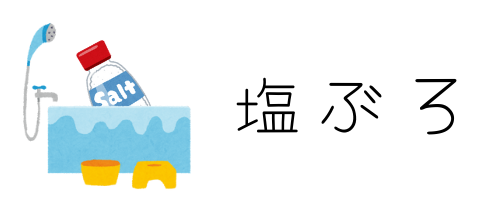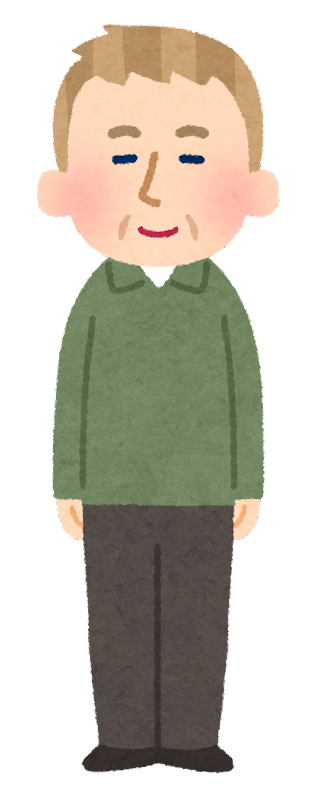ライフハックとしてではなく、英語学習にも極めて有用なのが、著名人が10分程度のプレゼンを行うTEDです。
TED Talksとは、あらゆる分野のエキスパートたちによるプレゼンテーションを無料で視聴できる動画配信サービスのことです。10年ほど前にサービスが開始されてから、政治、心理学、経済、日常生活などの幅広いコンテンツが視聴できることから人気を集めています。
RareJob English Lab
TEDは4000を超える膨大な数の動画があります。しかし慣れないうちは、動画の探し方や視聴のコツが分かりませんよね。この記事では、数多くのTEDを見てきた管理人(塩@saltandshio)が、心を揺さぶられたトークをあらすじと一緒にご紹介します。
ビジネス英会話を効率よく身につけたい方におすすめスクール
シェーン英会話
シェーンは1977年の創業以来、ネイティブ講師が英語を英語で教える「直接教授法」を採用しています。首都圏におけるスクール拠点数は、ネイティブ講師の英会話スクールでNo.1。駅から近いスクールが多いので通いやすく時間を有効に使えます。
スピークバディ パーソナルコーチング
1日1時間の短期集中トレーニングで、あなたの英語力向上をコーチが全力でサポートします。あなたの英語の世界が、劇的に変わります。
ジャドソン・ブルワー: 悪い習慣を断ち切るシンプルな方法
つい引きずっている悪い習慣を新たな視点から捉え直すことで、その悪習を断ち切れるとしたらどうでしょう。精神科医ジャドソン・ブルワーは、喫煙から過食に至るまで、よくないと自覚していても、どうしてもやめられない習慣、つまり依存症と「マインドフルネス」との関係を研究しています。習慣形成のメカニズムをまず詳しく学び、今度こそ、つい一服、ほんの一口、車の運転中に一瞬だけメール…という誘惑に勝てるかもしれません(約9分半)。
[PR]無料体験レッスン実施中!全国208校、創業40年の老舗英会話スクール【シェーン英会話】集中力を保つのは難しい
私たちは、人の話しを聞いていても、途中でよく上の空になります。友達と話しをしていても、じつはスマートフォンを触りたくて仕方がないという人もいるでしょう。なぜ、私たちの集中力は長く続かないのでしょうか。
実は、こんなとき人は、現在知られている学習プロセスの中で最も原始的なものの1つと戦っています。最も基本的だと、研究からわかっている神経系に刻み込まれたプロセスです。
It turns out that we’re fighting one of the most evolutionarily-conserved learning processes currently known in science, one that’s conserved back to the most basic nervous systems known to man.
これは脳内における報酬に基づく学習プロセスの、「正の強化」および「負の強化」と呼ばれるものが原因です。
[PR]まずは無料カウンセリング”続けるため”の オンライン英語コーチ「スピークバディ パーソナルコーチング」原因は脳に埋め込まれた学習システム
例えば、私たちがなにか美味しそうな食べ物を見たとします。脳はそれを見て、「カロリーだ!食べて生き残れ!」と指示を出します。そうして口に入れた食べ物を味わったあと、脳はその美味しさに満足します(※脳は特に砂糖が入ったものを強く記憶する傾向にあります)。そうして、美味しかった食べ物はどんなものだったか、どこで買ったものかを脳に覚えさせるのです。これを、「文脈依存記憶」といいます。
食べ物を見る→食べる→そしていい気分になる、それを繰り返す。
トリガー(きっかけ)→ 行動 → 報酬
簡単ですね。
See food, eat food, feel good, repeat.
Trigger, behavior, reward.
Simple, right?
そのうち脳は「単純に美味しい食べ物のことを覚えるだけじゃなくて、落ち込んだ時に食べたら気分が良くなるんじゃないか?」と思うようになります。そうして私たちは、脳に言われるがまま行動を起こし、その結果を覚えてしまいます。もともとは空腹がトリガー(引き金)だったのに、今度は感情がトリガーに入れ替わってしまうのです。
タバコやお酒でも同じことがいえますね。口さみしい→タバコを吸う→気がまぎれる。これも、「トリガー → 行動 → 報酬」のひとつで、これを繰り返すことで習慣に変化していきます。その結果、甘いものが欲しくなってしまったり、タバコが吸いたくてたまらなくなってしまったりするのです。
[PR]知って得する、知らないと損をする!すぐに役立つ相手に合った「伝え方」のコツ!対処法はひたすら行動に注意を向けてみること
このように、甘いものやタバコ、またはお酒が習慣になると、いずれ肥満・病気・依存症へと発展してしまいます。そうならないために、私たちはどうすればいいのでしょうか。
自分の脳に抵抗したり、無理に何かに意識を向けようとする代わりに、「報酬に基づく学習プロセス」を活用してみるのはどうでしょう。コツがあるんですよ?
呼吸する間、自分の体が経験することにひたすら注意を向けるんです。
What if instead of fighting our brains, or trying to force ourselves to pay attention, we instead tapped into this natural, reward-based learning process … but added a twist?
What if instead we just got really curious about what was happening in our momentary experience?
たとえば、タバコを吸う時はひたすらタバコに注目してみる、というのがその方法です。吸うのを辞めさせようとするのではなく、とにかく好奇心を持って対処させてみるのです。実際、ジャドソン・ブルワーがマインドフルネス(瞑想)を用いた禁煙プログラムでは、被験者に対してタバコを吸いたくなったら勧めています。
ただし、なんとなく吸うのではなく、とにかく自分の行動と感情に意識を向けさせて吸わせるのがポイントです。
どうぞ吸ってください。どんな気分になるか、関心を持って観察してみてください。
“Go ahead and smoke, just be really curious about what it’s like when you do.”
そもそも、『なにかをやめたい』という人は、それが『悪習慣である』という認識が頭のどこかにあります。そのため、意識を持ってタバコを吸ったプログラム参加者は、「タバコはクソまずい」と言葉を漏らしたそうです。
意識していただけのことを体の芯から体験することによって、知識が知恵に変わります。このことにより、たんに『これはよくない』と頭で理解しているだけの段階から、『これは体に悪い』と体験に変わり、悪習慣が改善されていくのです。
[PR]しちだの魔法ペンなら35日でバイリンガルに!楽天4部門1位の英会話!<七田式>好奇心で悪習慣から抜け出そう
疲れている時に、つい配偶者や子供に怒ってしまうのも、いわば習慣のひとつです。疲れによって脳がうまく働かず感情の抑制が効かなった結果、昔ながらの習慣に逆戻りしてしまうのです。しかし、こうした習慣もまた、自分を深く見つめることで行動を変えていくことが出来ます。
習慣に従った結果を深いレベルで自覚していくことにより、そのうち行動を無理に抑えたり、我慢しようとするところから、いずれ行為自体への興味が薄まっていくのです。
これがマインドフルネスの神髄です。悪習にとらわれた結果を客観的に見据え、心底嫌気がさすことで、昔の悪い習慣から自然に離れることができるんです。
And this is what mindfulness is all about: Seeing really clearly what we get when we get caught up in our behaviors, becoming disenchanted on a visceral level and from this disenchanted stance, naturally letting go.
長年体に染み付いた習慣は、魔法のように一瞬では変わりません。ですが、時間をかけて少しずつ自分の行動とその結果を自覚することによって、自然に悪習慣から離れて新しい習慣が形成されていくことができます。良からぬ欲望を遠ざけようと焦るより、自分自身の体験に意識を向けようとする意欲、それは好奇心と呼べるものではないでしょうか。
[PR]すべての社会人のための業務効率アップ講座【速読解Biz】まとめ:やることは向き合い方を変えること
甘いものやタバコについ手が出てしまう人は、自分の行動を注意深く見ていくうちに、欲求の正体は身体感覚に過ぎないと気づけるようになります。イライラしたり、クヨクヨするのは、言い方を変えれば緊張感や不安感です。そうした身体感覚を好奇心を持って見つめることにより、長年染み付いた不安から来る反射的な習慣行動から抜け出し、あるがままの自分を認められるようになるのです。
喫煙やヤケ食いをしない人でも、暇つぶしにメールをチェックしたくなったり、仕事中に無関係なことを始めたくなったり、車を運転している最中に メールの返事をしたい衝動に駆られたりしたら、脳の本来の性質をうまく利用できるか試してみてください。ただ好奇心を持ち、その瞬間、体と心に起こっていることを観察してみてください。
So if you don’t smoke or stress eat, maybe the next time you feel this urge to check your email when you’re bored, or you’re trying to distract yourself from work, or maybe to compulsively respond to that text message when you’re driving, see if you can tap into this natural capacity, just be curiously aware of what’s happening in your body and mind in that moment.
終わりがなく、疲れや病気を引き起こす悪習慣から抜け出したい。
あなたが本気でそう思っているなら、やめるのではなく向き合い方を変えてみませんか。繰り返し意識して向き合うことで、新しい習慣があなたの心と身体を救ってくれるかもしれません。
英語全文
When I was first learning to meditate, the instruction was to simply pay attention to my breath, and when my mind wandered, to bring it back.
<全文を読む>▼クリック▼
So why is it so hard to pay attention? Well, studies show that even when we’re really trying to pay attention to something — like maybe this talk — at some point, about half of us will drift off into a daydream, or have this urge to check our Twitter feed.
So what’s going on here? It turns out that we’re fighting one of the most evolutionarily-conserved learning processes currently known in science,one that’s conserved back to the most basic nervous systems known to man.
This reward-based learning process is called positive and negative reinforcement, and basically goes like this. We see some food that looks good, our brain says, “Calories! … Survival!” We eat the food, we taste it — it tastes good. And especially with sugar, our bodies send a signal to our brain that says, “Remember what you’re eating and where you found it.” We lay down this context-dependent memory and learn to repeat the process next time. See food, eat food, feel good, repeat. Trigger, behavior, reward.
Simple, right? Well, after a while, our creative brains say, “You know what? You can use this for more than just remembering where food is. You know, next time you feel bad, why don’t you try eating something good so you’ll feel better?” We thank our brains for the great idea, try this and quickly learn that if we eat chocolate or ice cream when we’re mad or sad, we feel better.
Same process, just a different trigger. Instead of this hunger signal coming from our stomach, this emotional signal — feeling sad — triggers that urge to eat.
Maybe in our teenage years, we were a nerd at school, and we see those rebel kids outside smoking and we think, “Hey, I want to be cool.” So we start smoking. The Marlboro Man wasn’t a dork, and that was no accident. See cool, smoke to be cool, feel good. Repeat. Trigger, behavior, reward. And each time we do this, we learn to repeat the process and it becomes a habit. So later, feeling stressed out triggers that urge to smoke a cigarette or to eat something sweet.
Now, with these same brain processes, we’ve gone from learning to survive to literally killing ourselves with these habits. Obesity and smoking are among the leading preventable causes of morbidity and mortality in the world.
So back to my breath. What if instead of fighting our brains, or trying to force ourselves to pay attention, we instead tapped into this natural, reward-based learning process … but added a twist? What if instead we just got really curious about what was happening in our momentary experience?
I’ll give you an example. In my lab, we studied whether mindfulness training could help people quit smoking. Now, just like trying to force myself to pay attention to my breath, they could try to force themselves to quit smoking. And the majority of them had tried this before and failed — on average,six times.
Now, with mindfulness training, we dropped the bit about forcing and instead focused on being curious. In fact, we even told them to smoke. What? Yeah, we said, “Go ahead and smoke, just be really curious about what it’s like when you do.”
And what did they notice? Well here’s an example from one of our smokers. She said, “Mindful smoking: smells like stinky cheese and tastes like chemicals, YUCK!” Now, she knew, cognitively that smoking was bad for her, that’s why she joined our program. What she discovered just by being curiously aware when she smoked was that smoking tastes like shit.
(Laughter)
Now, she moved from knowledge to wisdom. She moved from knowing in her head that smoking was bad for her to knowing it in her bones, and the spell of smoking was broken. She started to become disenchanted with her behavior.
Now, the prefrontal cortex, that youngest part of our brain from an evolutionary perspective, it understands on an intellectual level that we shouldn’t smoke. And it tries its hardest to help us change our behavior, to help us stop smoking, to help us stop eating that second, that third, that fourth cookie. We call this cognitive control. We’re using cognition to control our behavior. Unfortunately, this is also the first part of our brain that goes offline when we get stressed out, which isn’t that helpful.
Now, we can all relate to this in our own experience. We’re much more likely to do things like yell at our spouse or kids when we’re stressed out or tired, even though we know it’s not going to be helpful. We just can’t help ourselves.
When the prefrontal cortex goes offline, we fall back into our old habits, which is why this disenchantment is so important. Seeing what we get from our habits helps us understand them at a deeper level — to know it in our bones so we don’t have to force ourselves to hold back or restrain ourselves from behavior. We’re just less interested in doing it in the first place.
And this is what mindfulness is all about: Seeing really clearly what we get when we get caught up in our behaviors, becoming disenchanted on a visceral level and from this disenchanted stance, naturally letting go.
This isn’t to say that, poof, magically we quit smoking. But over time, as we learn to see more and more clearly the results of our actions, we let go of old habits and form new ones.
The paradox here is that mindfulness is just about being really interested in getting close and personal with what’s actually happening in our bodies and minds from moment to moment. This willingness to turn toward our experience rather than trying to make unpleasant cravings go away as quickly as possible. And this willingness to turn toward our experience is supported by curiosity, which is naturally rewarding.
What does curiosity feel like? It feels good. And what happens when we get curious? We start to notice that cravings are simply made up of body sensations — oh, there’s tightness, there’s tension, there’s restlessness — and that these body sensations come and go. These are bite-size pieces of experiences that we can manage from moment to moment rather than getting clobbered by this huge, scary craving that we choke on.
In other words, when we get curious, we step out of our old, fear-based, reactive habit patterns, and we step into being. We become this inner scientist where we’re eagerly awaiting that next data point.
Now, this might sound too simplistic to affect behavior. But in one study, we found that mindfulness training was twice as good as gold standard therapy at helping people quit smoking. So it actually works.
And when we studied the brains of experienced meditators, we found that parts of a neural network of self-referential processing called the default mode network were at play. Now,one current hypothesis is that a region of this network, called the posterior cingulate cortex, is activated not necessarily by craving itself but when we get caught up in it, when we get sucked in, and it takes us for a ride.
In contrast, when we let go — step out of the process just by being curiously aware of what’s happening — this same brain region quiets down.
Now we’re testing app and online-based mindfulness training programs that target these core mechanisms and, ironically, use the same technology that’s driving us to distraction to help us step out of our unhealthy habit patterns of smoking, of stress eating and other addictive behaviors.
Now, remember that bit about context-dependent memory? We can deliver these tools to peoples’ fingertips in the contexts that matter most. So we can help them tap into their inherent capacity to be curiously aware right when that urge to smoke or stress eat or whatever arises.
So if you don’t smoke or stress eat, maybe the next time you feel this urge to check your email when you’re bored, or you’re trying to distract yourself from work, or maybe to compulsively respond to that text message when you’re driving, see if you can tap into this natural capacity, just be curiously aware of what’s happening in your body and mind in that moment. It will just be another chance to perpetuate one of our endless and exhaustive habit loops … or step out of it.
Instead of see text message, compulsively text back, feel a little bit better — notice the urge, get curious, feel the joy of letting go and repeat.
Thank you.
<閉じる>

\ ほかにも気になるトークが満載! /








